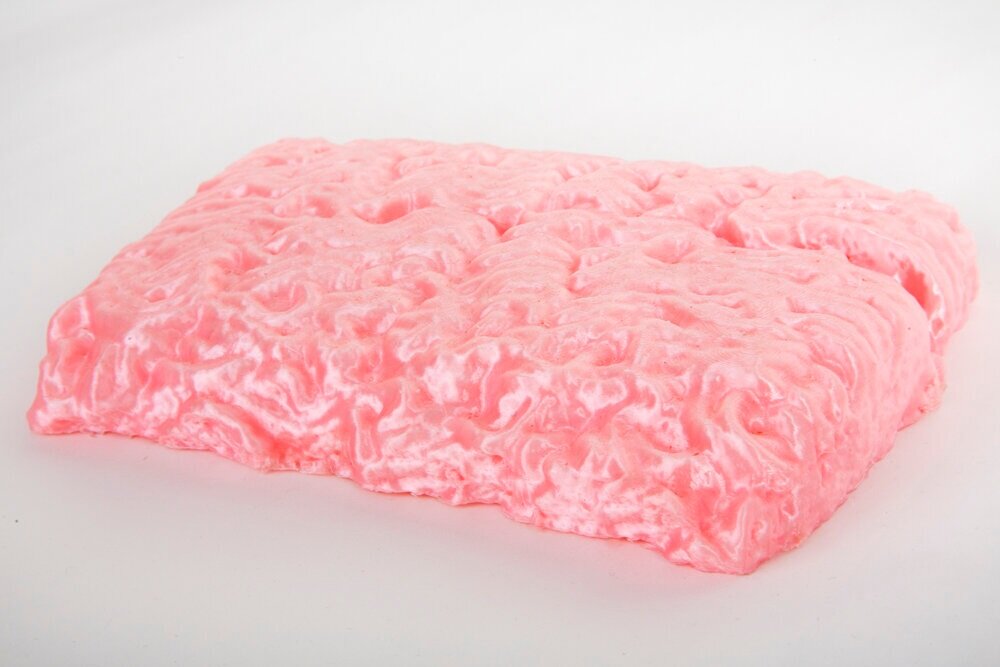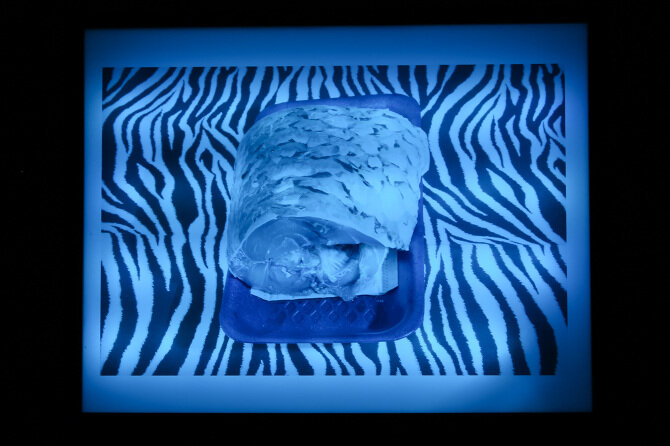ANIMAL PRINTS
Animal Prints is a play on the food industry’s translation of agricultural products into abstract, reproducible designs for human consumption. In the production of animal print, we convert the variable exquisite markings occurring across a species of animal into a simplified, printable pattern. While the production of animal print visually abstracts the outward appearance of animals, the emergence of lab grown meat mimics this process of abstraction in its production of a homogenous version of what is inside an animal. Meat, which generally varies based on the animal of origin’s diet, life, and unique makeup becomes something printable. In fact, several cellular agriculture companies use stereolithography, a form of 3d printing to build their scaffolding. Many agricultural products we think of as “natural,” such as fruits and vegetables are actually highly manipulated, whether through artificial selection or genetic modification, to have particular properties, such as little or no seeds, firmer structure, a longer shelf life, or resistance to bacteria and insects.
This exhibition transports the viewer to a surreal storefront where animals and fruits are transformed into intricately designed fashion objects. Animal flesh is incorporated into fashion advertisements and clothing patterns. A display case of 3d printed ground beef sculptures references the controlled design of meat in a lab. A series of “designer” fruits bearing animal print skin function as an exaggerated depiction of genetic modification in fruit production.






Below: Installation view: Animal Prints, Graduate and Alumni Gallery, University of Arizona, Tucson, AZ, 2019








